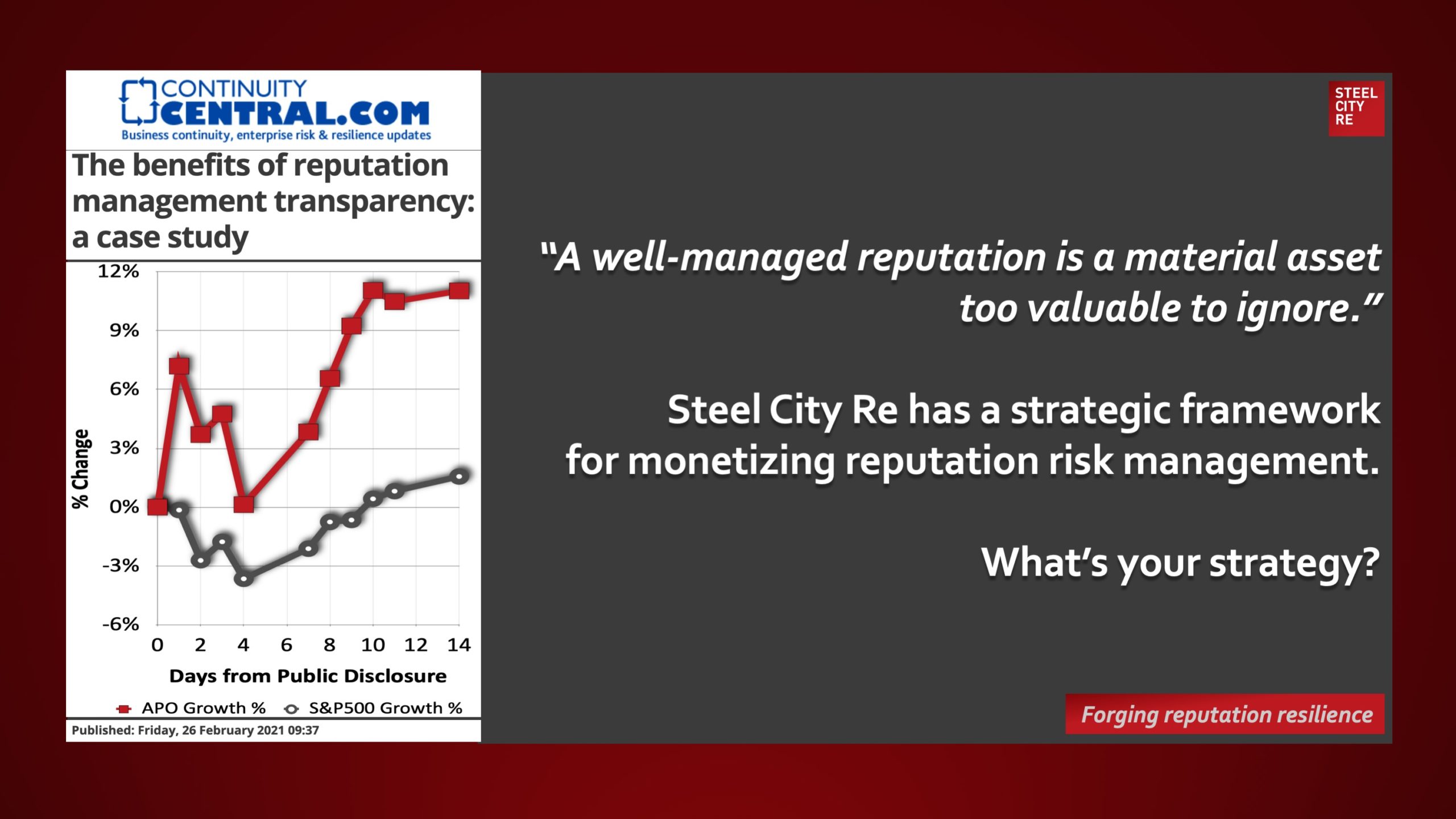“Strong corporate governance and reputation risk management are the kind of authentic, simple to understand story marketers and investment relations professionals need to be telling stakeholders. Not only does it inspire their confidence, it’s compelling to ESG raters, bond raters, and investors; and it shields the personal reputations of individual board members and provides leverage in negotiating D&O liability coverage in a hard insurance market.”
Continuity Central
February 26, 2021
“A well-managed reputation is a material asset too valuable to ignore.”
Click on Read More (below) for full text (no paywall).
Steel City Re has a strategic framework for monetizing reputation risk management.
For a broader view of reputation risk, discover additional articles by Steel City Re here, mentions of Steel City Re here, and comments on newsworthy topics by Steel City Re here.
Reputation is Mission-Critical
A management program for ethics and compliance can forestall prosecution and mitigate fines. Similarly, oversight of “mission- critical” issues can forestall securities litigation. A program for reputation resilience, comprising both risk management and insurance (reinsurance)-authenticated oversight for all that is mission-critical, can create value in many ways. To this end, Steel City Re offers a Reputation Resilience Program.
Having a robust Reputation Resilience Program in place offers, amongst other benefits:
- Protection for the company, its staff, executives, and board from litigation and regulatory challenges
- Improved governance processes and better enterprise risk management protocols; i.e., measuring reputational risk
- Establishment of an agile operating, communications, and decision-making team, with clear roles and responsibilities, trained and ready to handle all reputational threats; i.e., a reputation risk management framework
- Proactive management of risks that could give rise to delays or derailing concerns around new product and strategic partnership launches
- Captured behavioral economic value from stakeholders; i.e., value of reputation
- Reduced costs of debt and risk transfer while boosting equity value; i.e., boosting reputational value
A hazard of reputation risk is a lurking gap between stakeholder expectations and reality. Another hazard is the emotional intensity associated with expectations. The peril is anger from disappointed stakeholders. This video and this written summary explain the behavioral economic features of the many perils of reputation risk.
Illustrated Guide to Reputation Risk Management. Mitigating risk strategically through expectation management and operational adjustments evinces thoughtful management and dutiful governance. Financing such risks evinces prudence, and doing so publicly enables stakeholders to appreciate and value the effort. These comprise the core of Steel City Re’s professional services.
One Question
Illustrated Guide to Reputation Risk Management. ESG-linked reputation risks are prevalent and material. Are reinsurance and insurance for ESG-linked reputation risk part of your strategy?

